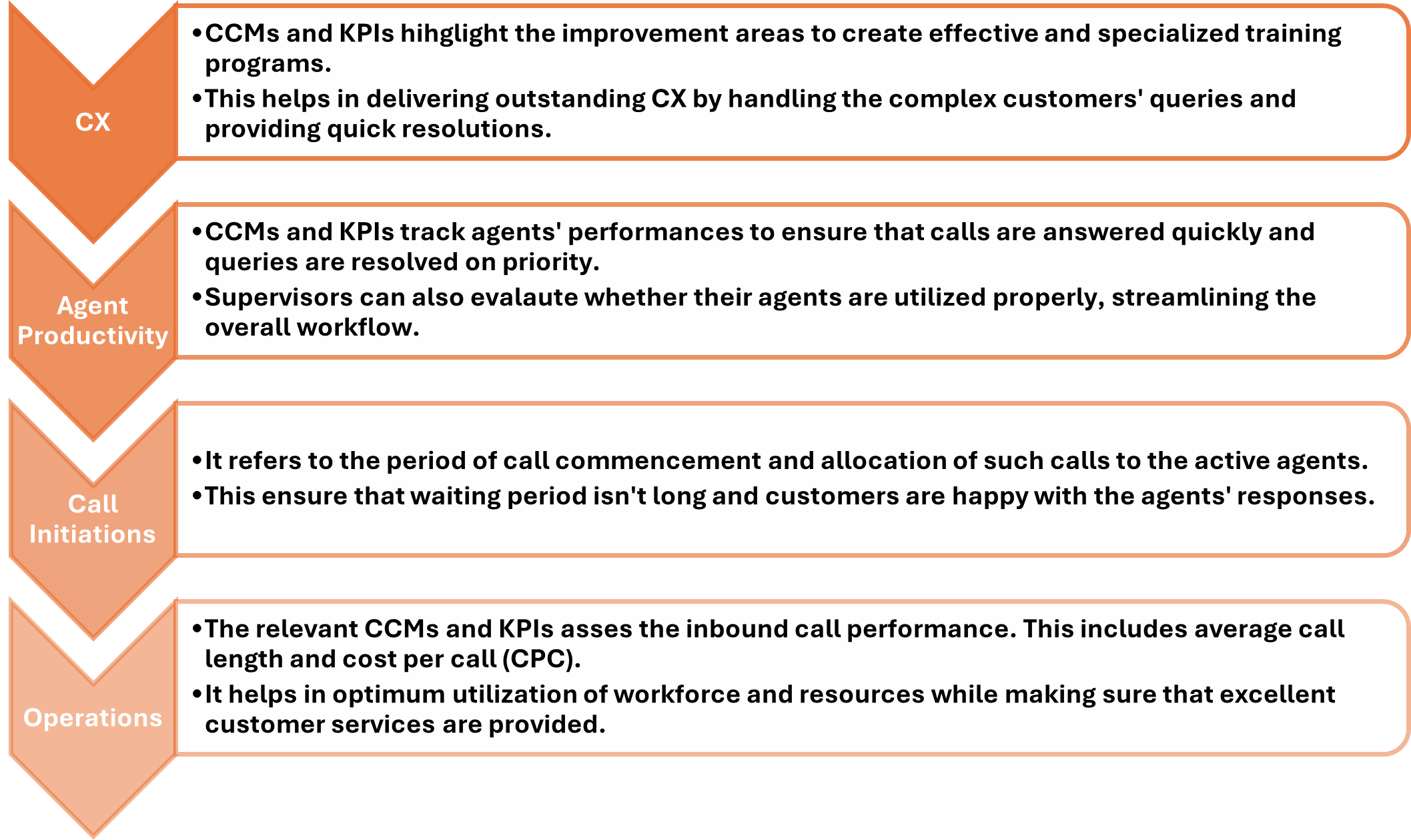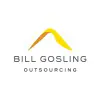Summary
Still trying to figure out what works and what doesn’t work in a call center? Metrics and key performance indicators (KPIs) take the guesswork out of the picture and highlight the performance gaps to enhance the overall call center operations. To enhance the customer satisfaction and retention rates, it is essential that customers’ queries are handled and appropriate solutions are provided on priority.
Introduction
In today’s fast-paced business world, call centers act as a bridge between businesses and their customers. To ensure streamlined operations, businesses rely on call center metrics (CCM) and KPIs to measure, evaluate, and improve overall performance and customer satisfaction.
In this comprehensive guide, we take a dive in the pool of CCMs, exploring its importance, and its key areas. We’ve listed some of the best metrics that must be tracked by the call centers to ensure growth and success in the long term.
As per Future Market Insights ‘Call Center Market’ article, the market size of the global call center industry stood at USD37.4 billion in 2025 and is expected to grow with a CAGR of 7.4% to reach USD76.8 billion in 2035
Understanding Call Center Metrics and KPIs
Call Center Metrics
- Definition: CCMs are those quantitative data points that evaluate and track numerous performance aspects of the call centers to learn where they stand.
- Scope: Metrics can cover many aspects, including agent performance, operational efficiency, customer satisfaction, etc. They may not always be directly tied to the primary goals of the call center.
- For Instance: Average Handle Time (AHT), Abandonment Rate (AR), Agent Occupancy Rate, Call Volume, Service Level, etc.
- Use: Metrics provide detailed insights into specific areas of call center performance. These metrics help in identifying trends and improvement areas.
Call Center KPIs
- Definition: Call center KPIs are the subsets of significant metrics that are directly related to the goals and objectives of the businesses.
- Scope: KPIs are those factors that are aligned with the organizational goals that display the operational progress.
- For Instance: First Call Resolution (FCR), Customer Satisfaction Score (CSAT), Net Promoter Score (NPS), Customer Retention Rate, Revenue per Call, etc.
- Use: KPIs are tracked by the businesses to know where they stand in providing quality customer services.
Difference Between Metrics and KPIs
CCM and call center KPIs are related concepts but differ in purpose and scope.
- Metrics track general performances, whereas KPIs track performance related to specific areas.
- Metrics are broader in nature, whereas KPIs are narrow and targeted.
Significance of the Call Center Metrics and KPIs
CCMs and KPIs play a crucial role in day-to-day and overall operations, providing a broader view of the organization’s performance. Therefore, the following are the reasons why CCMs and KPIs are essential:

Apart from this, CCMs and KPIs also help in making data-based decisions, ensuring proper resource allocation, and promoting accomplishment of strategic objectives.
“You can’t improve what you don’t measure.” – Peter Drucker.
Key Focus Areas for Metrics & KPIs
CCMs and KPIs create a pathway to quality services and enhanced customer experience (CX). There are various areas these metrics and indicators focus on, which are:

“Be helpful, even if there’s no immediate profit in it.” – Susan Ward.
10 Essential Call Center Metrics and KPIs in 2025
Indeed, here are ten essential call center metrics that are crucial for measuring and managing call center performance:
- AHT: AHT measures the average time an agent spends on customer interaction, including talk time, hold time, and after-call work. It is essential for evaluating the operational efficiency and quality CX.
“As per Salesforce’s ‘The State of Service’, AHT is tracked by 84% of the service companies .”
- FCR: It measures the total calls resolved in the first interaction out of the total calls made. A low FCR means ineffective problem resolutions, whereas a high FCR implies quick resolutions of queries.
“As per SQM Group’s ‘First Call Resolution (FCR) Comprehensive Guide’ article, the FCR’s industry benchmark ranges between 70% and 79% ”
- CSAT: It measures satisfaction levels by asking them about their experience. This gives an insight into the quality of services provided.
“According to Salesforce’s “What Is a Customer Satisfaction Score (CSAT)?” article, the average CSAT was about 78% (iv).”
- Call Blocked Percentage: This metric is related to the percentage of incoming callers who receive a busy tone. In short, such callers are unable to connect with the call center agents. A high call blocked rate implies poor workflow management and inefficient operations. “To calculate blocked calls, divide the total number of blocked calls by the total number of incoming calls.”
- NPS: It provides an insight into customer loyalty. This is done by asking them the probability of recommending your company to other customers.
“Zoho’s FAQs on an actionable implementation of NPS survey state the average NPS for top companies must be over 70% (v).”
- CES: It assesses the efforts made by the customers to get their issues resolved. Low efforts mean high customer satisfaction and vice versa.
“A report by Servion, ‘How to Improve Your Customer Effort Score’ states that only 9% of customers with low efforts leave the brands, compared to 96% with high efforts ”
- Abandonment Rate (AR): AR indicates the total calls that were disconnected by the customers before interacting with the agents. Lower AR means low customer frustration and better revenue gains.
- Occupancy Rate (OR): OR evaluates the total time agents were occupied with the customers. This shows how effective your workflow management is.
“As per Call Center Helper’s ‘What Are the Industry Standards for Call Center Metrics?’ article, the industry benchmark for maximum OR stood at 83.3% ”
- Utilization Rate (UR): Like the other CCMs, UR varies by industry; you’ll likely have to monitor this metric over time to establish an ideal and realistic agent UR. Agent UR is similar to a more detailed version of the AHT; instead of just looking at the time it takes agents to wrap up calls, it evaluates the operations performed by an agent during working hours.
- Service Level: It provides an insight into total answered calls within a specified period of time. This shows the ability of a call center to manage the call volume in an effective manner.
4. Conclusion
CCMs and KPIs are crucial tools that help in monitoring and optimizing different aspects of call center performances. These metrics and KPIs provide a deep insight into efficiencies, service quality, satisfaction rate, overall performance, and more. By tracking the main CCMs and KPIs, call centers can improve the operations, offer outstanding CX, and improve the customer satisfaction rate.
Frequently Asked Questions on Call Center Metrics and KPIs
1. How do CCMs and KPIs improve CX?
By monitoring CCMs and KPIs, call centers can:
- Identify improvement areas;
- Streamline operations;
- Enhance response times;
- Deliver a smoother and more satisfying CX.
2. Which areas do CCMs and KPIs focus on?
CCMs and KPIs focus on a wide range of areas, which includes:
- Agent performance;
- Satisfaction and loyalty;
- Operational productivity;
- Workflow management.
3. What is the difference between metrics and KPIs?
Metrics measure specific activities or processes, whereas KPIs aim to track outcomes related to organizational goals.
In short: all KPIs are metrics, but not all metrics are KPIs.
Sources:
Future Market Insights ‘Call Center Market
Salesforce’s ‘The State of Service
SQM Group’s ‘First Call Resolution (FCR) Comprehensive Guide
Salesforce’s “What Is a Customer Satisfaction Score (CSAT)?
Zoho’s FAQs on an actionable implementation of NPS survey
Servion, ‘How to Improve Your Customer Effort Score
Call Center Helper’s ‘What Are the Industry Standards for Call Center Metrics?



